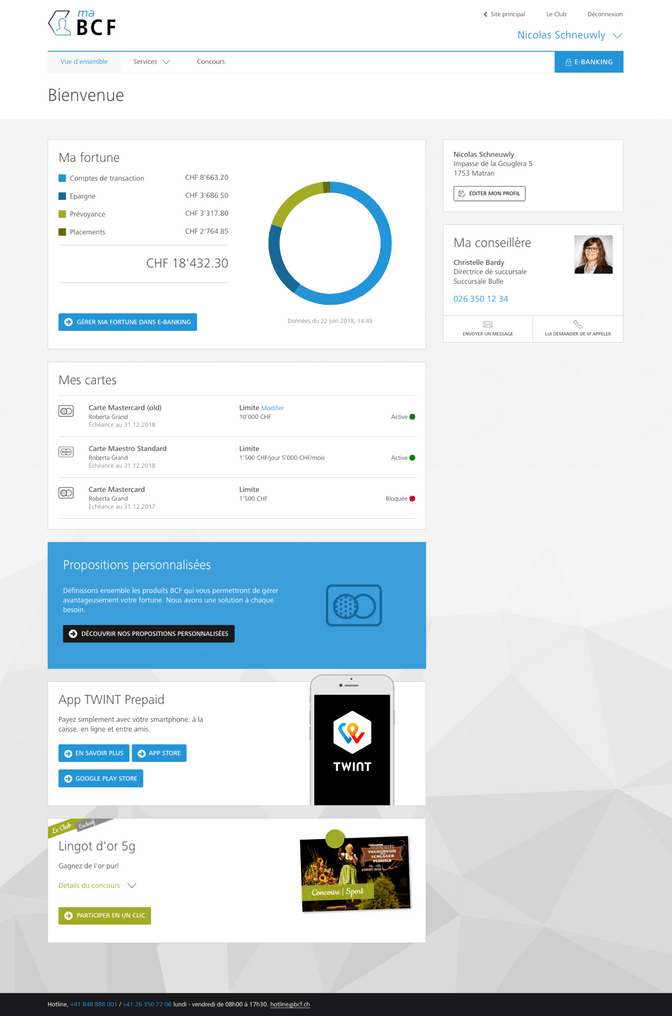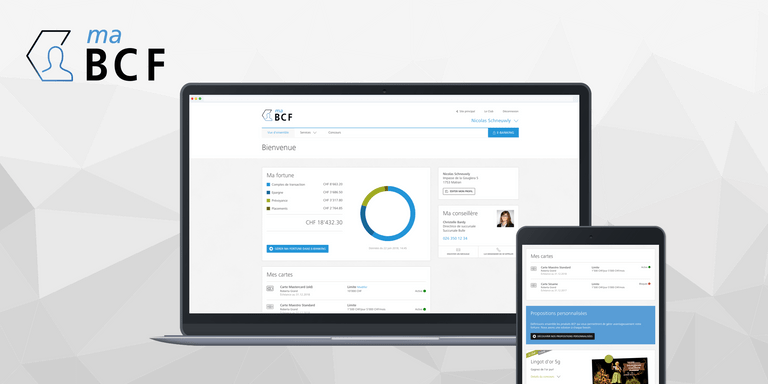Practicing Scrum since the foundation of Liip, we lead complex projects that require frequent changes during their implementation. The maBCF portal is one of these projects. We mastered the infrastructure and security constraints imposed by the client's field of activity. And the integration of a User Experience (UX) designer into the Scrum team increased agility.
First of all, we defined and developed a minimum viable product (MVP). This is the version of the platform that meets the needs of users by minimizing the investment of time and money. This first version was released a few weeks ago - already working on an update. New features will be added soon.
Our solutions are designed to evolve, based on user feedback.
Agile and efficient
To meet BCF's request to create a customer space on its website, we gathered a Scrum team. A Scrum Master, a Product Owner, four developers, a UX designer and a content specialist have set to work.
We are convinced that it is necessary and beneficial to integrate the client into the project team. The constitution of a multidisciplinary team including the BCF team allowed a great efficiency during the 11 consecutive sprints (22 weeks). While respecting major constraints: the infrastructure and security required by the banking industry.
At Liip, we are driven by several principles. Our excellent collaboration with the BCF is perfectly illustrated by our principle "flexibility over strength". We are convinced that only an agile and iterative approach can meet these challenges related to the banking industry. This flexibility also makes it possible to deploy the customer's strategy while meeting user expectations.
Tailor made and user-centred
A client's product is unique. The solution we develop have to be just as distinctive. The UX designer participated in each of the 11 sprints, in order to make the creation process even more agile. In other words, to best meet the expectations of the users of the future maBCF portal while optimizing the work of the Scrum team.
Models created during the sprints
Often all the models are prepared by the UX designer before the first sprint begins. There is therefore a risk that the designs no longer meet the needs of developers, as the project scope evolves as development progresses.
During the maBCF project, we included the creation of these models into the sprints.
The UX designer was preparing the design elements for the N+1 sprint when the developers were working on the N sprint.
This approach allowed us to be more responsive to project developments. But it also presented a major challenge. Ensuring that the models needed by developers were available at the right time. So to ensure that the sprint runs smoothly. The planning of the UX designer's work was therefore crucial.
A styleguide as a compass
During the first workshop, we designed sketches of the future platform together with the client . The designer used them to create models, directly in the styleguide. This form of graphic charter is an essential tool for developers. It includes a library of styles and components. Besides, the client can visualize in the styleguide the page layout and the behavior of the different functionalities.
The BCF team was able to make decisions fast based on these 1:1 scale prototypes. Because the styles matches exactly the final product.

This first experience was a success. We are excited about the rewarding collaboration we have created with the BCF. And we are proud to have put our principle of "flexibility over strength" into practice. We will systematically integrate the creation of designs during our next sprints on the maBCF project, but also during other projects.

